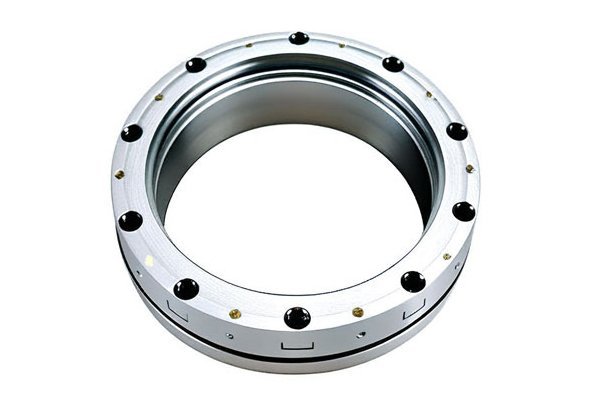: Harnessing Cost Control in CNC Machining
In the rapidly evolving landscape of manufacturing, businesses face continuous pressure to streamline operations while maintaining quality. Cost control in aluminum CNC (Computer Numerical Control) machining is not just about reducing expenditures; it’s about maximizing efficiency and ultimately securing a competitive edge. As one of the leading companies in CNC machining, YL Machining understands that effective cost control strategies can dramatically influence both profitability and productivity.
Navigating the complexity of cost control involves a strategic approach that combines technology, process optimization, and supply chain management. In this article, we will delve into the various facets of cost control in aluminum CNC machining, highlighting actionable strategies that can be implemented right away to ensure your operations not only stay afloat but thrive in today’s competitive marketplace.
Before we dive into specific strategies, it’s crucial to understand why cost control is pivotal in CNC machining.
1.1 The Impact on Profit Margins
Profit margins in CNC machining can be narrow, particularly when dealing with materials like aluminum that require careful handling and precision. Effective cost control helps maximize these margins by reducing waste and minimizing unnecessary expenses.
1.2 Enhancing Productivity
Cost control isn’t solely about cutting costs but also about enhancing productivity. When processes are streamlined and unnecessary costs are eliminated, time can be redirected towards value-added activities, thus improving overall efficiency.
1.3 Competitive Advantage
In an industry where every cent counts, having a solid cost control strategy can set a company apart. By operating at a lower cost, businesses can offer more competitive pricing or reinvest savings into innovation and quality improvements.
Understanding where your costs lie is the first step in effective cost control. For aluminum CNC machining, costs can be broadly categorized into direct and indirect costs.
2.1 Direct Costs
2.2 Indirect Costs
2.3 Digital Expression of Costs
An effective way to visualize costs is through data analytics. Utilizing software to break down costs and visualize them through charts and graphs can provide insight into where savings can be achieved.
Here are several cost control strategies that can be effectively implemented in aluminum CNC machining:
3.1 Invest in Advanced Technology
Integrating advanced technologies like IoT (Internet of Things) and AI (Artificial Intelligence) into your CNC processes can lead to substantial savings. These technologies enable real-time monitoring of machine performance, predicting maintenance needs, and reducing downtime.
Key Benefits:
3.2 Optimize Tooling Selection
Tooling can significantly impact your bottom line. Implementing a tool management system can track tool usage, identify the most effective tools for specific tasks, and ensure timely replacement.
Recommendations:
3.3 Streamline Production Processes
Analyzing and optimizing your CNC machining processes can yield significant savings. Employ methodologies such as Lean Manufacturing to identify and eliminate waste.
Strategies Include:
3.4 Implement Statistical Process Control (SPC)
SPC involves using statistical methods to monitor and control production processes. By establishing quality control measures, you can ensure products meet specifications and reduce rework costs.
Practical Steps:

3.5 Supplier Relationship Management
Building strong relationships with suppliers can lead to better pricing, priority service, and more favorable payment terms.
Tips for Effective Supplier Management:
3.6 Energy Efficiency Initiatives
Aluminum machining can be energy-intensive. Implement energy-saving initiatives to lower utility bills.
Actionable Steps:
Aluminum presents unique challenges and opportunities in cost control. Understanding its specific requirements can aid in formulating tailored strategies.
4.1 Material Optimization
Aluminum is a lightweight and durable material, but it can also be costly if not managed efficiently.
Actions to Consider:
4.2 Planning for Scale
Forecasting demand accurately allows for better planning of production runs, which can help in reducing costs associated with overproduction or stockouts.
Tactics:
4.3 Training and Skill Development
Investing in employee training enhances efficiency and reduces errors that can lead to increased costs.
Employee Development Strategies:
Implementing cost control strategies is just the beginning; continuous monitoring and evaluation are key to sustained success.
5.1 Key Performance Indicators (KPIs)
Establish KPIs to measure the impact of cost control initiatives. Common KPIs in CNC machining include:
5.2 Regular Review Sessions
Schedule regular meetings to assess the effectiveness of your cost control strategies. Fine-tune your methods based on feedback and results.
: A Sustainable Approach to Cost Control
Cost control is more than just a operational necessity; it’s a strategic approach that can lead to long-term sustainability and success in aluminum CNC machining.
At YL Machining, we believe that a robust cost control strategy is integral to not only enhancing operational efficiency but also to distinguishing ourselves in a competitive landscape. By investing in technology, optimizing processes, and fostering strong supplier relationships, we can harness the full potential of our aluminum CNC machining capabilities while keeping costs effectively managed.
As the industry continues to evolve, so too must our strategies. Fostering a culture of continuous improvement ensures that our company is not just keeping up with the competition, but setting the standard for others to follow. The future of CNC machining rests on our ability to adapt and innovate, and cost control is at the very heart of this endeavor.
Do you want to learn more about how our innovative CNC machining solutions can propel your business forward? Connect with YL Machining today, and let’s explore the possibilities together!






